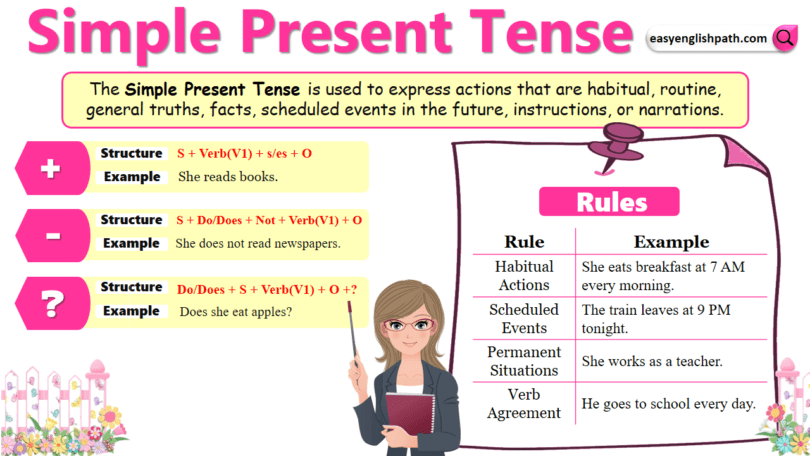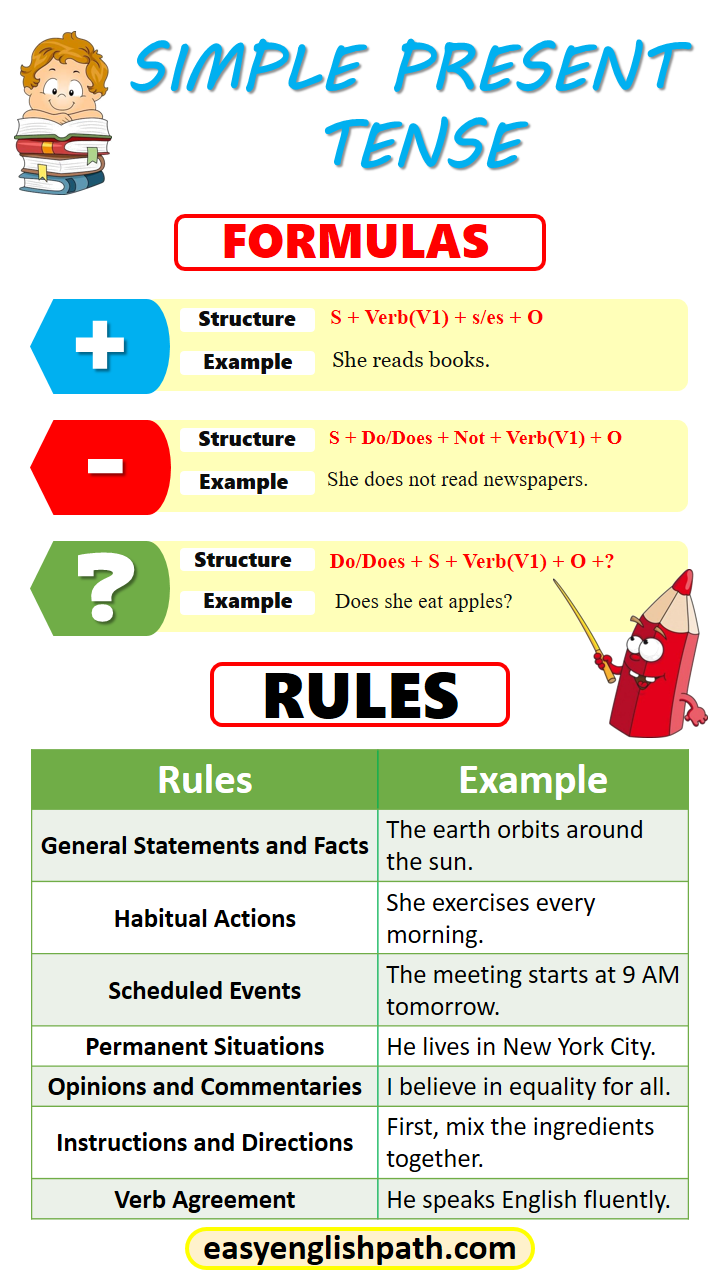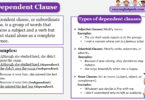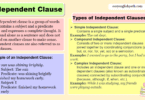It helps us talk about things that happen in our daily life. It is also used to describe habits or facts that are always true when they are mentioned in a sentence. Simple Present Tense examples include, when we say She plays tennis, it means she regularly plays tennis. We keep the verbs simple in present simple tense, like play, but we add S or ES sometimes with the following subjects only, he, she, or it. Let’s understand this rule with some examples. He plays, She plays, and It plays.
What is a Simple Present Tense?
The Simple Present Tense is a verb tense and it is used to describe actions that happen on regular basis or activities that we do in daily routine. It’s also used to talk about real facts, or states of being. it’s formed by using the base form of the verb (the infinitive without “to”) for most subjects, with the addition of -s or -es for third-person singular subjects (he, she, it).
- I play tennis every Saturday.
- She eats breakfast at 7 a.m.
- The sun rises in the east.
- They speak French fluently.
Simple Present Tense Basic Structure:
The Simple Present Tense basic structure is:
Subject+ Base form of verb (infinitive)(+-s/-es for third-person singular)
- Subject:
This can be a person or thing, doing the main action in the sentence. We have the following subjects: I, you, he, she, it, we, or they, or any other noun or pronoun. - The base form of the verb (infinitive):
This is the basic form of the verb which does not have any endings. For example, play, eat, speak, study, etc. - -s/-es for third-person singular:
S and ES are added to the main form of the verb when the subject is third-person singular (he, she, it). it is really important to learn that we never add S and ES with any other subject except third person singular. and they are just added at the end of the main verb that shows the action.
For Examples -s to the end of the verb (e.g., plays, eats, speaks ). For some verbs ending in -s, sh, ch, x, or, o, we add -es instead of -s (e.g., washes, teaches, fixes, goes).
How to Create Simple Present Tense?
Affirmative Structure:
Positive structure is used to describe actions that happen regularly or facts that are admitted true worldwide. You need to use the base form of the verb (infinitive), adding S or ES for third-person singular subjects.
Subject + Base form of the verb (infinitive) (+ -s/-es for third-person singular)
Examples:
- She plays tennis every Saturday.
- They study English in the evening.
- I work at a company.
Negative Structure:
This structured is used to Indicate actions that don’t happen or are not true. We should use do not (or does not for third-person singular) before the base form of the verb.
Subject + do/does + not + Base form of the verb (infinitive)
Examples:
- She does not play tennis every Saturday.
- They do not study English in the evening.
- He doesn’t work on Sundays.
Interrogative Structure (Question):
This structure is used to ask questions about actions or routines. it begins with Do (or “does” for third-person singular), and it is followed by the subject and the base form of the verb.
Do/Does + subject + Base form of the verb (infinitive)
Examples:
- Does she play tennis every Saturday?
- Do they study English in the evening?
- Do you work on Sundays?
Interrogative Negative Form (Negative Question):
This structure is used to ask questions in a negative form. Do not or Does not will be used for third-person singular before the subject and the base form of the verb.
Do/Does + not + subject + Base form of the verb (infinitive)
Examples:
- Doesn’t she play tennis every Saturday?
- Don’t they study English in the evening?
- Don’t you work on Sundays?
Simple Present Tenses Examples:
| Subject | Verb | Example Sentence |
| I | eat | I eat breakfast every morning. |
| She | reads | She reads books in her free time. |
| They | play | They play basketball after school. |
| He | works | He works at a bank. |
| The train | arrives | The train arrives at 9 a.m. |
| We | walk | We walk to school together. |
| Cats | sleep | Cats sleep a lot during the day. |
| The Earth | revolves | The Earth revolves around the sun. |
| It | snows | It snows in the winter. |
| Dogs | bark | Dogs bark when they hear a noise. |
You May Also Like this






